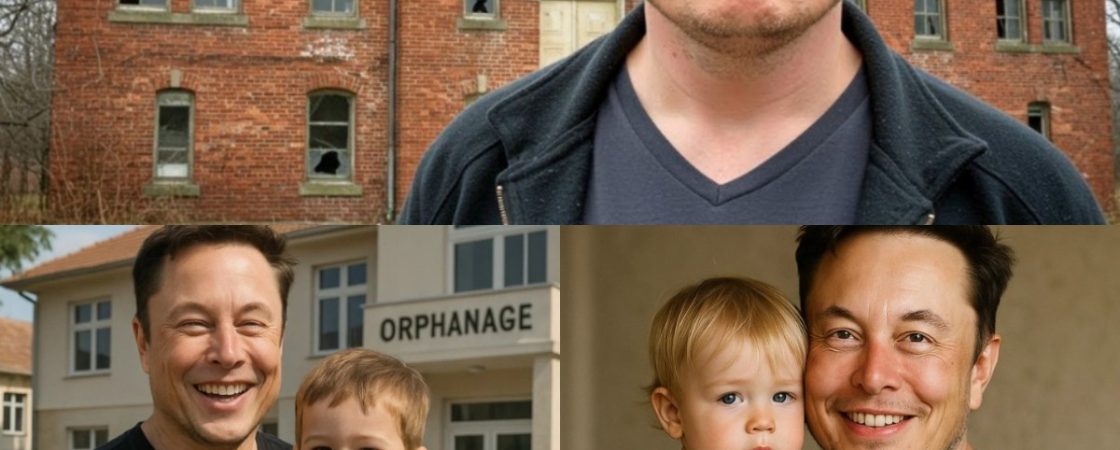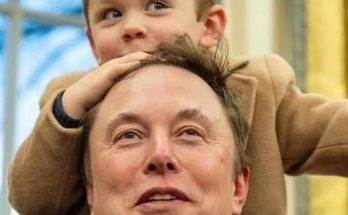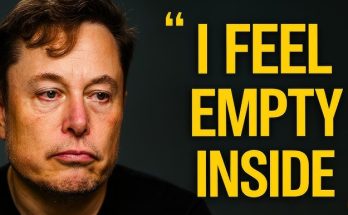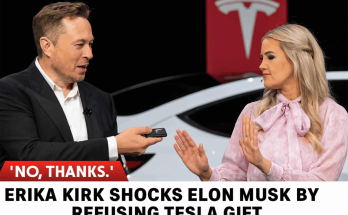🌍 THE PLACE WHERE THE FUTURE LIVES
Elon Musk and the House Where Tomorrow Was Reborn
It began with a single question — seven words that echoed down a dark corridor filled with the smell of peeling paint and the faint whir of dying lights:
“What happens to these kids when the lights go out?”
No reporters.
No cameras.
Just a man standing in a hallway lined with broken toys and empty chairs, where children once waited for dinner.
The man was Elon Musk.
And the building — just a few miles from Hollywood — was a failing orphanage, its power cut for hours each day because of unpaid bills.
No one knew why Musk was there.
No one imagined what would come next.
But weeks later, that quiet visit would ignite something extraordinary.
From Orphanage to “Future Home Academy”
Three weeks after Musk’s unannounced visit, an internal SpaceX email leaked:
“Project Aurora: converting LA orphanage into F.H.A — Future Home Academy.”
At first, people assumed it was just another charitable initiative.
But when the blueprints surfaced — showing solar-powered dorms, AI classrooms, water-recycling systems, and a “Dream Lab” powered by Tesla tech — the world realized: Musk wasn’t just saving a building. He was reinventing what it means to care for children.
“This isn’t about donations,” Musk told a small circle of Tesla and Neuralink engineers.
“It’s about dignity — giving them what I had when I was alone: curiosity, freedom, and a chance.”
The Architecture of a Dream
The “Future Home Academy” was built on a triangle of humanity — shelter, education, and creation.
1. Solar-Powered Homes
Over 200 children now live in dorms designed by Boring Company architects, powered by Tesla Solar Roofs.
No more blackouts. No more flickering bulbs.
Each room’s light adjusts to the child’s biological rhythm, and a touchscreen console teaches them how renewable energy works — right from their bedside.
2. STEM Academy and AI Lab
At the heart of the campus stands STEM Hall, offering free access to robotics, coding, and AI learning.
Volunteers include engineers from SpaceX, Tesla, and OpenAI.
Here, homework isn’t about repetition — it’s about creation.
A 12-year-old recently built a solar-powered irrigation bot within his first two weeks.
3. Therapy and Mentorship
Unlike traditional orphanages, the academy is run by former foster youth — those who once lived the same story.
They don’t teach from textbooks, but from memory and empathy.
One former foster mother, now a counselor, said tearfully:
“For once, the kids aren’t just being given a bed. They’re being given a future.”
4. The Dream Lab
Every classroom bears a whiteboard with a single question:
“What will you change?”
Each child chooses a real-world problem they believe needs fixing — from climate change to mental health.
“We don’t teach them to dream small,” a SpaceX engineer said.
“We teach them to dream audaciously — and to prove that dreams can be engineered.”
Why Musk Did It
Elon Musk has always been an enigma — the man who talks about Mars and AI but rarely about himself.
Few know about his lonely childhood in South Africa: bullied, isolated, spending long hours in libraries instead of playgrounds.
One engineer working on the project revealed:
“He never talks about the past, but you can feel it — this one’s for the kid he used to be.”
A childhood friend from Pretoria put it more simply:
“Elon doesn’t believe in pity. He believes in opportunity. And that’s exactly what this project is.”
A Monument of the Heart
When drone footage of the site first went viral, millions were mesmerized.
The rooftops glowed like liquid gold under the sun.
Walls were covered in climbing vines.
And in the center courtyard stood a wooden sign engraved with six simple words:
“The Place Where the Future Lives.”
Inside, laughter echoed through glass corridors.
Children ran circles around an owl-shaped teaching robot they nicknamed Mr. Wise.
Others wore VR headsets, learning how to grow crops on Mars.
Musk stood quietly at the edge of the courtyard, hands in his pockets, smiling faintly.
No speech. No spotlight. Just a moment of quiet pride.
Doubt and Faith
Of course, not everyone was convinced.
Critics accused Musk of staging a “PR redemption arc.”
But those on-site told another story.
A construction worker said:
“I’ve worked on plenty of Tesla projects. But I’ve never seen him stay this long. One day it rained — he ate sandwiches with the kids, no cameras, no entourage.”
A volunteer recalled:
“He wiped away tears when an 8-year-old girl handed him a drawing of her dream home — it had a robot, a sun, and the words: ‘Thank you for fixing my world.’”
From One Place to a Movement
As the Los Angeles academy neared completion, Musk made a quiet announcement:
“By 2026, there will be ten more. California, Texas, maybe beyond.
We can’t fix the world at once — but we can fix one childhood at a time.”
Experts called it a “New Humanitarian Model” — blending renewable energy, STEM education, and emotional care.
Universities have already expressed interest in studying the model to replicate it in developing countries.
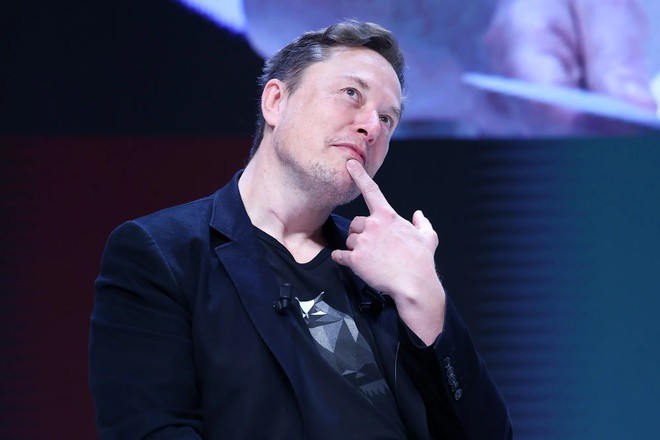
The Story Behind the Wooden Sign
The sign at the gate, engraved “The Place Where the Future Lives,” wasn’t Musk’s idea.
It came from a 10-year-old boy — one of the last residents before the orphanage shut down.
He wrote those words on a piece of scrap paper and taped it to a rotting door.
When reconstruction began, Musk ordered it preserved.
“That’s the real mission statement,” Musk said.
“Not mine. Theirs.”
An Afternoon in the Dream Lab
Friday afternoon sunlight streamed through solar glass panels, spilling across rows of desks where ten children worked with an engineer.
They weren’t doing homework — they were designing a clean-water system for low-income neighborhoods.
A little girl asked:
“If we make it work here, can it work in Africa?”
The engineer smiled:
“That’s exactly the kind of question Musk would ask.”
In one corner, a Neuralink tutorial on AI communication played silently.
Outside, another group tested a robot that sorts recyclables.
Laughter mixed with the sound of typing and the chirp of birds from the solar garden.
A curly-haired boy, once homeless, whispered:
“Before, I just wanted a place to sleep.
Now, I want a place to dream.”
From Genius to Guardian
Elon Musk has been called many things — visionary, disruptor, madman.
But now, a new title has emerged:
“The Guardian of Futures.”
For many, this project marks a turning point — a softer, more human side of the man who builds rockets and rewires industries.
Not the man of steel, but the man of soul.
A viral post summed it up perfectly:
“He once took humanity to Mars.
But this time, he’s bringing children back to Earth — with hope.”
When the Lights No Longer Go Out
On opening night, there was no red carpet.
Only rows of solar-powered lights flicking on one by one — like stars descending upon Los Angeles.
Children stood beneath them, their faces glowing.
One little girl tugged Musk’s sleeve:
“Will the lights ever go out again?”
He shook his head gently.
“Not here. Not anymore.”
Then he turned toward the wooden sign, the words carved deep into its grain:
“The Place Where the Future Lives.”
And for a brief, quiet moment, it felt like Musk’s true legacy wasn’t rockets or cars — but the futures he helped ignite in the hearts of children.
Epilogue – The Future Begins at Dusk
As the sun dipped below the horizon, the solar rooftops still shimmered.
The last sound of the day came from a young boy reading the class motto aloud:
“The future isn’t something we wait for.
It’s something we build — together.”
And somewhere in the heart of Los Angeles, a forgotten building now pulsed with light —
a place once abandoned, now reborn.
A place where laughter replaced silence.
A place that lives up to its name:
